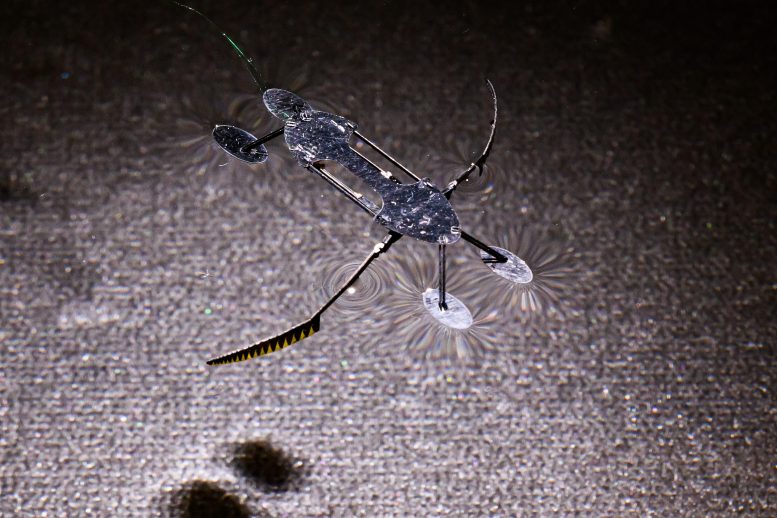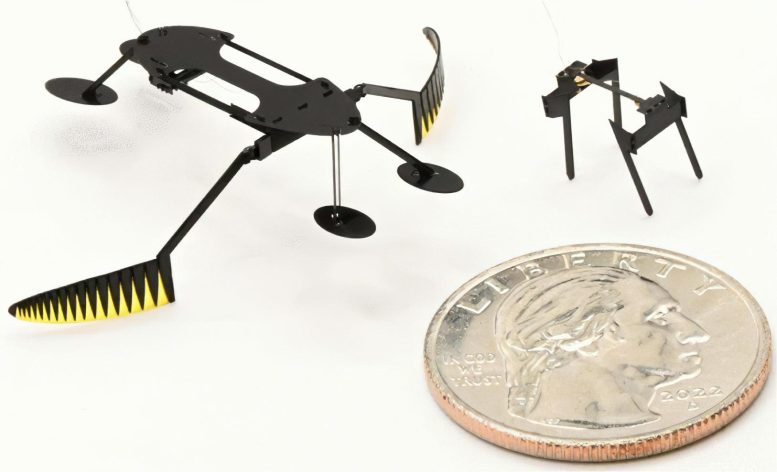
Researchers at Washington State University have developed the smallest and fastest micro-robots, potentially transforming fields from artificial pollination to surgery. Utilizing shape memory alloys for movement, these robots—significantly lighter and quicker than previous models—aspire to achieve greater autonomy and efficiency by mimicking natural insect behavior. Credit: WSU Photo Services
Two insect-like robots, a mini-bug and a water strider, developed at Washington State University, are the smallest, lightest and fastest fully functional micro-robots ever known to be created.
Such miniature robots could someday be used for work in areas such as artificial pollination, search and rescue, environmental monitoring, micro-fabrication, or robotic-assisted surgery. Reporting on their work in the proceedings of the IEEE Robotics and Automation Society’s International Conference on Intelligent Robots and Systems, the mini-bug weighs in at eight milligrams while the water strider weighs 55 milligrams. Both can move at about six millimeters a second.
Breakthroughs in Speed and Miniaturization
“That is fast compared to other micro-robots at this scale although it still lags behind their biological relatives,” said Conor Trygstad, a PhD student in the School of Mechanical and Materials Engineering and lead author on the work. An ant typically weighs up to five milligrams and can move at almost a meter per second.
The key to the tiny robots is their tiny actuators that make the robots move. Trygstad used a new fabrication technique to miniaturize the actuator down to less than a milligram, the smallest ever known to have been made.

A WSU-created robot is placed next to a quarter to illustrate its size. Credit: WSU
“The actuators are the smallest and fastest ever developed for micro-robotics,” said Néstor O. Pérez-Arancibia, Flaherty Associate Professor in Engineering at WSU’s School of Mechanical and Materials Engineering who led the project.
Advanced Actuator Technology
The actuator uses a material called a shape memory SciTechDaily